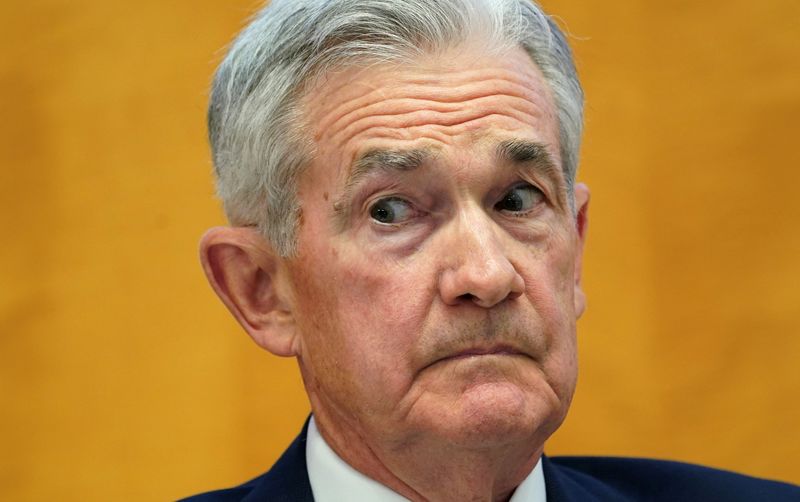Powell speech takes center stage in Tuesday’s economic events
Investing.com - The US Federal Reserve had hoped that 2024 would be a year for cutting interest rates. However, with inflation proving more persistent than almost anyone had expected, these expectations are quickly fading. Fed Chairman Jerome Powell confirmed this on June 12, when he and his fellow policymakers indicated there would be only one rate cut in 2024 and expected more in 2025, reinforcing the notion of keeping borrowing costs higher for longer to suppress inflation.
Traders now foresee only one or two rate cuts this year, a significant disappointment compared to the six expected at the beginning of the year and the three forecasted by Fed officials in March. Some investors and economists even see the possibility of no rate cuts at all this year.
The delay in easing monetary policy—and keeping interest rates "higher for longer"—has significant implications for the US economy which also resonates around the world.
-
What is keeping inflation high?
When inflation peaked above 7% in 2022, it reflected a broad-based increase in the prices of goods and services. But now, with the core inflation measure dropping below 3%, price increases are primarily driven by the persistent housing shortage. Prices for essential goods and auto insurance premiums also contribute to the inflation remaining above the Fed’s 2% target.
Some also point to Powell himself for prematurely announcing rate cuts, which sparked optimism in financial markets and fueled economic activity. Here’s a closer look at each of these factors:
Shelter prices, which account for about a third of the Consumer Price Index, have proven the most stable category. Despite some measures from the Bureau of Labor Statistics, Zillow Group (NASDAQ:ZG) Inc., and Apartment List showing slower rent growth for new leases, the corresponding components in the CPI have not yet reflected this.
Energy prices—particularly oil—rose in the first quarter after falling for most of last year. Any escalation in the Middle East conflict threatens to push them higher. This rise translated into more expensive gasoline and increased electricity prices. Although central bankers prefer to look at so-called core inflation measures that exclude energy prices due to their volatility, the rise in oil and other raw material prices has been hard to ignore, as it can manifest in higher shipping and goods costs.
Insurance costs are another driver of inflation. Renters’ and homeowners’ insurance costs are rising at the fastest rate in nearly nine years, while auto insurance increased by 20.3% over the year to May. The main reason is that cars are now more technologically complex, making repairs more expensive.
Powell spurred large market bets on rate cuts by saying in December that cuts were a topic of discussion at the Fed. The impact of these comments was equivalent to a 0.14 percentage point rate cut and could add about half a percentage point to the CPI this year, according to Anna Wong, chief US economist at Bloomberg Economics.
2. What are the domestic consequences of "higher for longer" interest rates?
Powell’s signal that the Fed may keep the interest rate at the current level of 5.25% to 5.5% for longer means that loans for homes and cars will remain much more expensive than before the Fed began raising rates in 2022.
The fact is that the average mortgage interest rate in the US has stayed above 7% for the past two months. The cost of financing has stymied recent momentum in the housing market, with potential buyers waiting for financing costs to drop. Supply remains low as many homeowners are reluctant to give up the cheap mortgages they secured when rates were near zero.
-
How does the Fed's policy affect the rest of the world?
Despite the Fed's stance on maintaining interest rates, some of its global counterparts are moving ahead with rate cuts. Last week, the Bank of Canada led the G7 in cutting borrowing costs, followed by the European Central Bank. If these institutions, along with the Bank of England and the Reserve Bank of Australia, continue their easing cycles, their currencies risk depreciating—leading to higher import prices and undermining progress in reducing inflation. But not easing could risk losing economic growth.
The ECB, however, ruled out a second rate cut in July, and some are questioning the wisdom of such a move in the September meeting. The Bank of England is likely to take longer to shift to rate cuts, with traders pricing the first cut in the fall. Bank of Canada Governor Tiff Macklem made it clear that Canada's rate policy does not need to move in sync with its southern neighbor, despite potential downward pressure on the Canadian dollar.
A "higher for longer" interest rate scenario would strengthen the dollar against other currencies, as the high US interest rates make investment in US securities more attractive, boosting the dollar’s value. With each increase in the dollar, it becomes harder for developing economies—especially those with dollar-denominated debt, which becomes more expensive to service as their local currency weakens.
